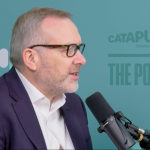
Why Placemaking and Cross Finance is the Answer to Achieving Net Zero

We all know the important goal of achieving Net Zero by 2050. Various parts of the solution are well known - such as expanding renewables, replacing boilers with heat pumps, retrofitting buildings, and rolling out electric vehicle charging points, among many others. But until now the cost of all this and how it is going to be paid hasn’t been completely spelled out.
Connected Places Catapult, Core Cities UK, and London Councils have together formed the UK Cities Climate Investment Commission (UKCCIC) to tackle this. In October, we released a report which has identified that approximately £206 billion must be spent to achieve Net Zero pledges across the UK’s Core Cities and London Councils, representing around one quarter of the UK population. This is spread across the five identified asset classes: residential and commercial retrofit, transport, waste, energy and renewables.
Public finances cannot provide all of this amount but within London and 11 of the largest UK cities alone, there is an important role for private finance to play.
Through the UKCCIC report we looked at the investment plans of the 12 cities. While some have done things individually to secure investment, these have never before been aggregated together, nor has an exact figure been put on the cost.
We've known for a long time that capital markets only invest where there is a bankable proposition. What is missing in the Net Zero debate is development finance–the work that needs to be done to move a project from a concept to a bankable proposition. As such, projects can often seem quite risky and hence investors tend to steer well clear.
The low-hanging fruit of renewable electricity generation is still the most attractive opportunity for investors. It is the easiest for them to invest in, is relatively low free and the returns are all but guaranteed. But what about the other asset classes?
Placemaking Pilots
Blended finance may be the answer.
A blended finance model occurs when some of the dividends from those bigger returns from renewables are used to help fund some of the more challenging interventions like residential retrofit. This can only be done through a place-based approach and is why we focused the report on cities. While local authorities don't always manage, maintain or operate all the assets, they still have a critical curating role to play through placemaking.
‘Place-based net zero bundles’ are where green investment opportunities can be gathered together as a package. These will attract returns in the form of savings, additional revenue streams and other social and environmental benefits.
We are proposing that five £10-million publicly financed Net Zero demonstrators be built that test and refine this blended model. This public money can be then leveraged to drive private sector finance.
There have been attempts in the past to achieve this, namely through the European Investment Bank’s ELENA facility, but some tweaking is needed to make it work better. A three-step approach can help:
- Cities should identify projects which when bundled together are ‘bankable’
- They should put in place the technical assistance required to operate the projects effectively
- They should create the right financing structures to deliver the bankable proposition
If you could consider bundling together solar panel installation on council housing stock with retrofit solutions to make homes more energy efficient, the more rapid pay-back period of the solar panels could help ‘subsidise’ the longer timeframe for the insulation work. In addition, the bundling could help support easier access to relevant government subsidies and minimise disruption for householders.
The Next Steps
In the build-up to the report and since the launch in mid-October, we have spoken to various government departments and private sector institutions–including UK Infrastructure Bank and pension providers–who absolutely understand and recognise that this model is needed.
Interest in our approach is growing elsewhere. One of our partners involved through UKCCIC is C40 whose members include mayors of some of the most important cities in the world – and whose chair is currently Mayor of London, Sadiq Khan. In addition, the UK’s presidency of COP26–that is taking place now in Glasgow–means the time is ripe to take this forward.
Mayors and city leaders across the country have very key roles to play, not just in their own cities but on this agenda more widely. Their unanimous support articulates the absolute need for the role that Connected Places Catapult is playing in terms of galvanising support, and creating potentially a greater strategic partnership between local and central government.
There needs to be a more solid strategic partnership between these two levels, if government, local people and local cities and towns are to reap the Net Zero dividends.
Watch our event from the Glasgow City Chambers at COP26 in Glasgow on 3rd November here to learn more about the report and action needed to be taken.





